The Art World’s Rediscovered Bad Girl Queen — Tamara de Lempicka’s Moment Gains Even More Steam In Texas
An Inside Look at a Houston Blockbuster and One of the Creative Stories Of The Year
BY Catherine D. Anspon // 03.11.25The Museum of Fine Arts, Houston presents the Tamara de Lempicka retrospective from March 9 to May 26, 2025, celebrating the Deco-era icon.
The rediscovery of Art Deco painter Tamara de Lempicka (1894 to 1980) is the art story of the year. With the artist’s first American museum show going on at Museum of Fine Arts, Houston, Catherine D. Anspon recalls the artist’s lost Houston chapter and queries MFAH curator Alison de Lima Greene and documentary filmmaker Julie Rubio about why Lempicka is a talent for our times.
One of The shows of the spring is also a dark horse. It’s the tale of an Art Deco queen whose bold portraits were recherché for a while — despite being collected by Madonna, Barbra Streisand and Jack Nicholson — only to be rediscovered yet again and brought into wider public focus as one of the more shape shifting artists of the 20th century.
This grande dame of the Jazz Age embodied the streamlined glamour of the Deco era even as it confined her. Tamara de Lempicka’s smoldering portraits are so identified with the period that one appears on the cover of art historian Edward Lucie-Smith’s seminal 1990 book Art Deco Painting.
This season, Tamara de Lempicka charges back into the zeitgeist. She has become relevant for a fresh generation, not only for her narrative but for her inimitable and unmistakable style, one where bravura technique and bold image-making crafted canvases as unforgettable as Frida Kahlo’s works.
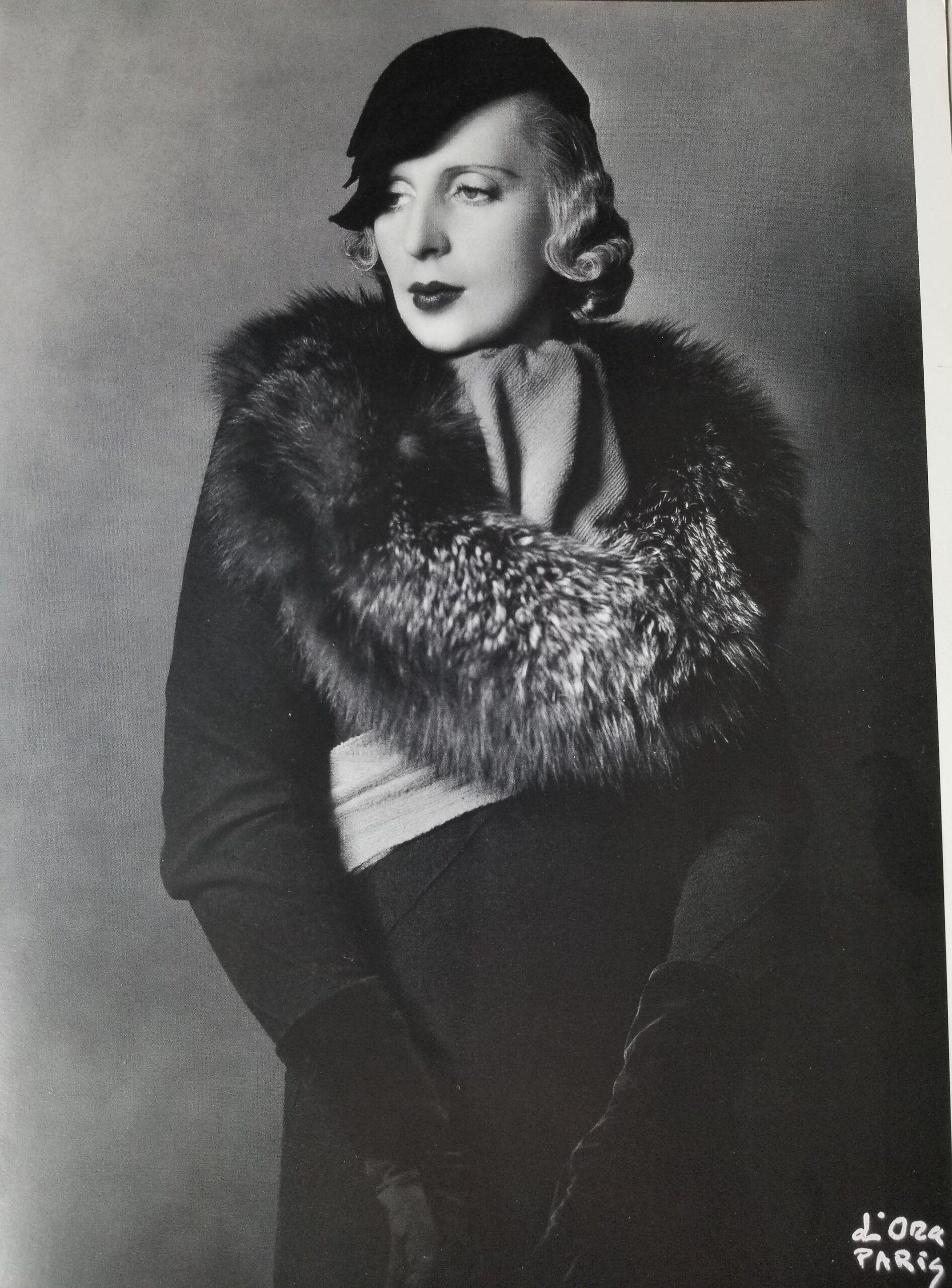
PaperCity first examined Tamara de Lempicka in December 2020, when we wrote about her era in Texas — a unique and happy chapter that unfolded while her daughter (and subject) Baroness Kizette de Lempicka-Foxhall resided in Houston. During Lempicka’s sojourn in Houston, she made a dazzling impression with her strikingly designed residences. First, a suite at the Warwick Hotel. Later an apartment at Regency House and a house at 3235 Reba Drive that she decorated for her daughter.
Despite an often dramatic relationship with Kizette, Tamara was generous, assisting with a down payment on the Foxhalls’ River Oaks home and paying private school tuition for granddaughters Victoria and Cha to attend The Kinkaid School and St. John’s School.
Lempicka, a bejeweled and caftaned regular at the symphony and theater, enjoyed swank luncheons at the Warwick and Houston Racquet Club, and cultivated friendships with Jane Blaffer Owen and Kitzia Poniatowska (Mrs. Conrad Moore), descendant of the last king of Poland, Stanislaw Poniatowski. Lempicka was known then as Baroness Kuffner, after her second husband Baron Raoul Kuffner. The widowed royal shed her artist identity and became a patron. She was often featured in society columns, including a 1964 profile by Houston Chronicle fine arts editor Ann Holmes: “Baroness Brings Along Furniture — And Collection of Art, Stories.”
Lempicka eventually decamped to sunnier climes in Cuernavaca, where she had a second home and would spend her final decade. Consequently, her time in Texas faded from memory — analogous perhaps to her lapse in the art-historical narrative, with the rise of new trends in contemporary art: minimalism, conceptualism, installation art.
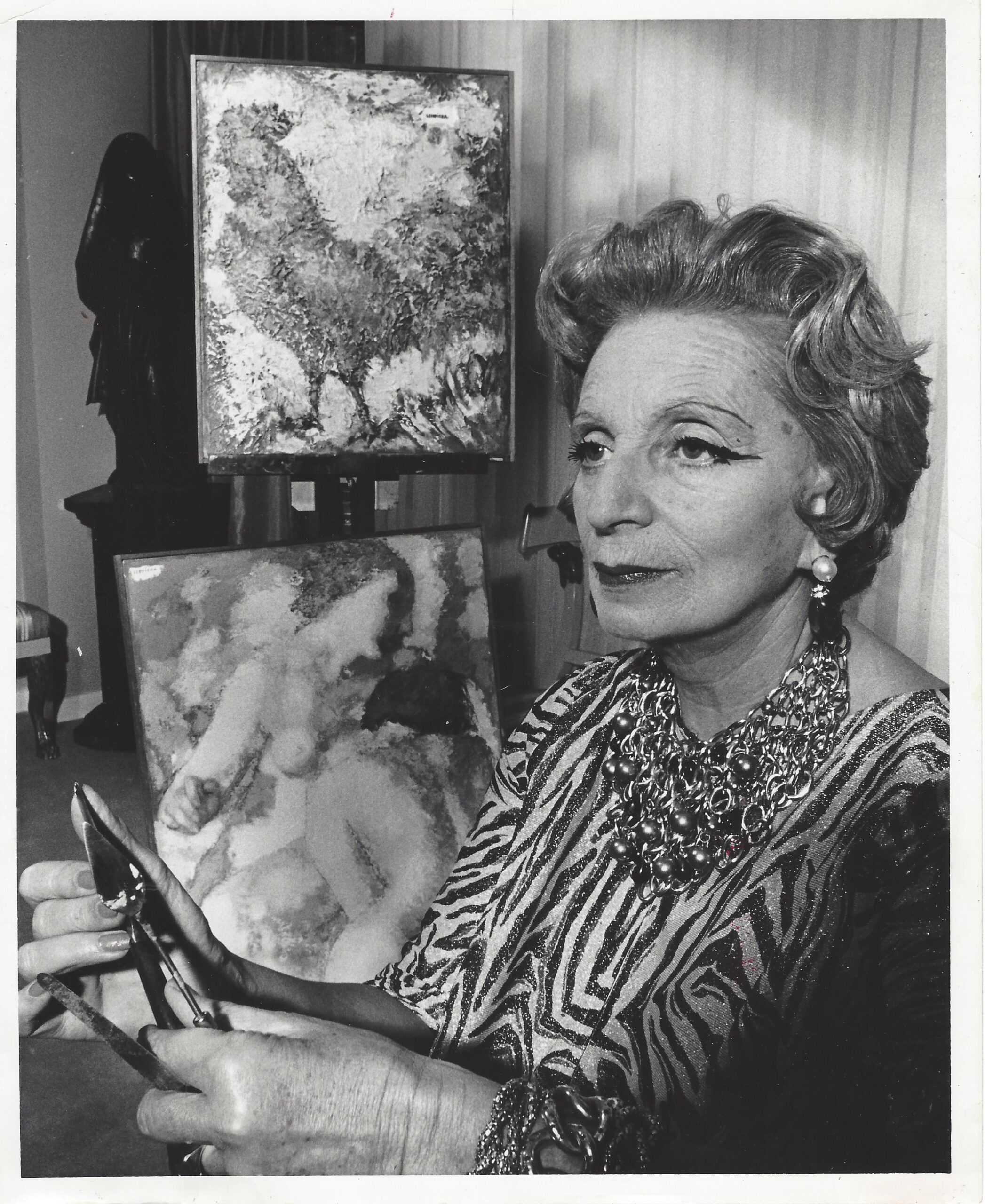
Tamara de Lempicka’s full place in this canon had largely been limited to the parameters of the Deco era, a side note to the global art market. But all that changed in the flurry of one auction at Christie’s London in February 2020, when a canvas that offered a glamorous ode to a Parisian cabaret chanteuse, Portrait de Marjorie Ferry (1932), sold for $21.1 million. That sale propelled de Lempicka into the stratosphere and made her work number eight among the top 10 Impressionist and modern lots sold in 2020.
Two years later, the Fine Arts Museums of San Francisco began organizing the blockbuster show simply titled “Tamara de Lempicka” and reached out to the MFAH to become a collaborator. The resulting exhibition arrived in fanfare in Houston, its second and final stop. The expansive show brings together more than 90 paintings and drawings spanning the 1920s into the 1940s, including de Lempicka’s calling card — the portraits and nudes of the 1930s.
Insights from the MFAH’s Alison de Lima Greene
PaperCity: Why does Lempicka resonate with today’s audiences?
Alison de Lima Greene: First of all, Tamara de Lempicka was a master of her craft: Her paintings are not only eye-catching but exquisitely rendered, and she had a remarkable ability to portray both men and women as powerful and sensual, so that her portraits and her nudes have an incredible immediacy. Indeed, her subjects seem to come to life before our eyes.
And since she hired some of the greatest portrait photographers of her time to document her atelier, her designer clothes, her fabulous diamond bracelets and, most importantly, her undeniable beauty, she feels very present even now. (By the way, many of those photographs are in this exhibit too).
The biographical angle is fascinating as well. Lempicka was charismatic. She lived life large — loving both men and women — and she maintained an alluring aura of mystery. And perhaps most importantly, she faced adversity with a cool determination.
We now know that one of her most carefully guarded secrets was that she had Jewish ancestry. Her parents had converted to Christianity several years before she was born, and Lempicka professed her Christian faith both in her life and in her paintings. However, in an era of lethal anti-Semitism, she also knew that had her ancestry been discovered, she would have lost her life once Paris was invaded by Hitler’s army.
She left in time and saved her husband’s life as well by insisting he leave too. Fortunately, the United States offered them asylum in 1939 and ultimately citizenship as well.
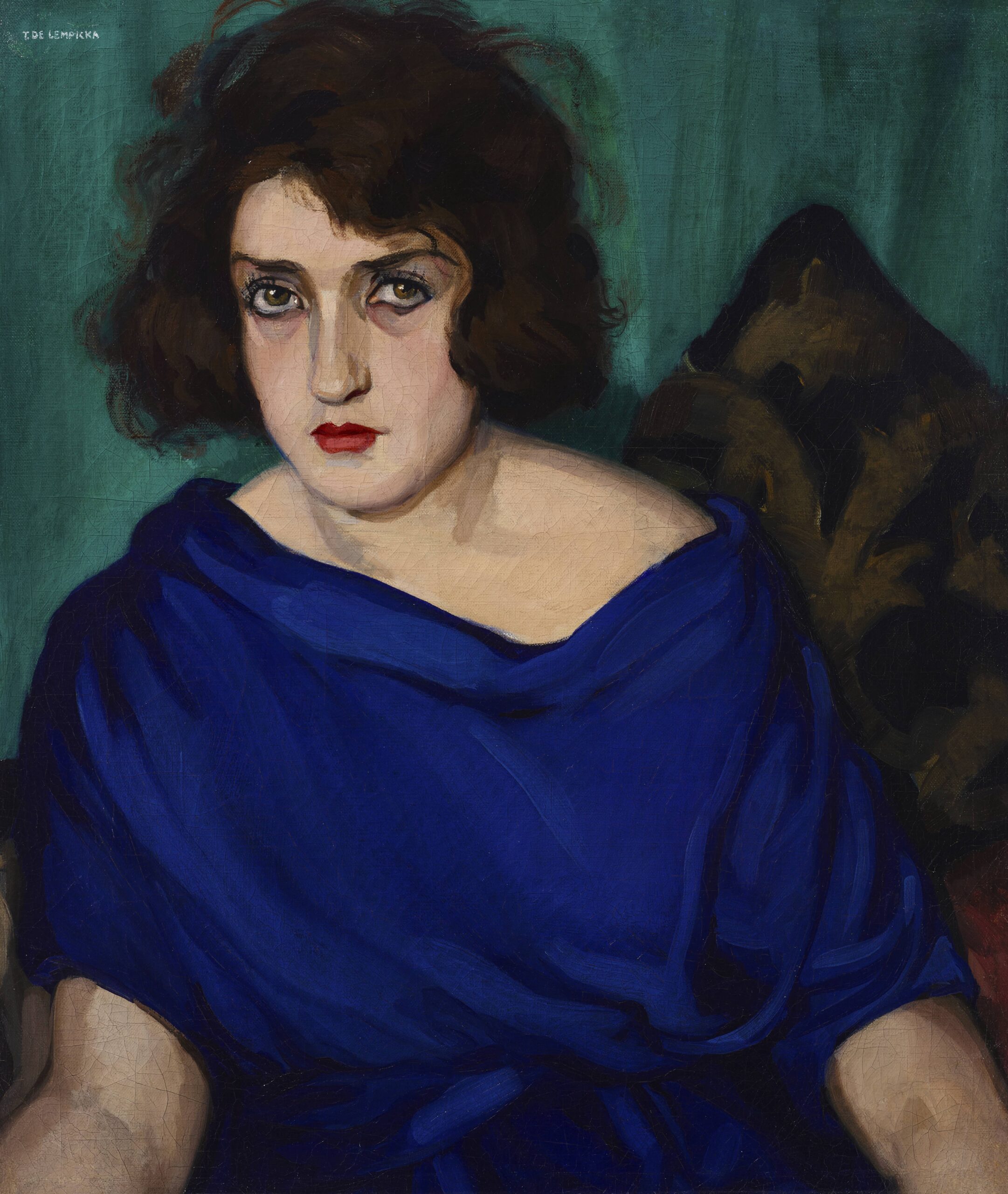
What you hope visitors will take away after seeing the MFAH exhibition.
AG: Many only know Lempicka’s work through reproductions. Seeing the paintings in person, as well as her exquisite drawings, is a revelation. Another surprise will be how much she learned from Old Master paintings, as well as her contemporaries. We can recognize echoes of works from the Italian Renaissance, Dutch 15th-century paintings and French Neoclassical paintings, as well as Pablo Picasso and Fernand Léger.
Finally, Lempicka knew all about contemporary photography, design and fashion, which we will emphasize through works from our own collections from the Art Deco era. On view will be a sleek cocktail shaker and cigarette cases, Paul Poiret’s beautifully draped coat from 1922, René Lalique’s glass vases and perfume bottles, photographs by Jacques-Henri Lartigue and Brassaï, and so much more.
How this exhibition — Lempicka’s first major American museum show — is different from those mounted previously in Europe.
AG: We were so fortunate to have Gioia Mori guest-curate the exhibition with Furio Rinaldi (Fine Arts Museums of San Francisco curator). Gioia had organized several great exhibitions of Lempicka in Europe and published landmark books and catalogs as well, but with each exhibition, she learned more about the artist and unearthed previously lost paintings and drawings.
She dedicated more than 30 years of research to Lempicka — and, alas, it turns out that this will be her final statement. Sadly, she died this January, having attended the show in San Francisco.
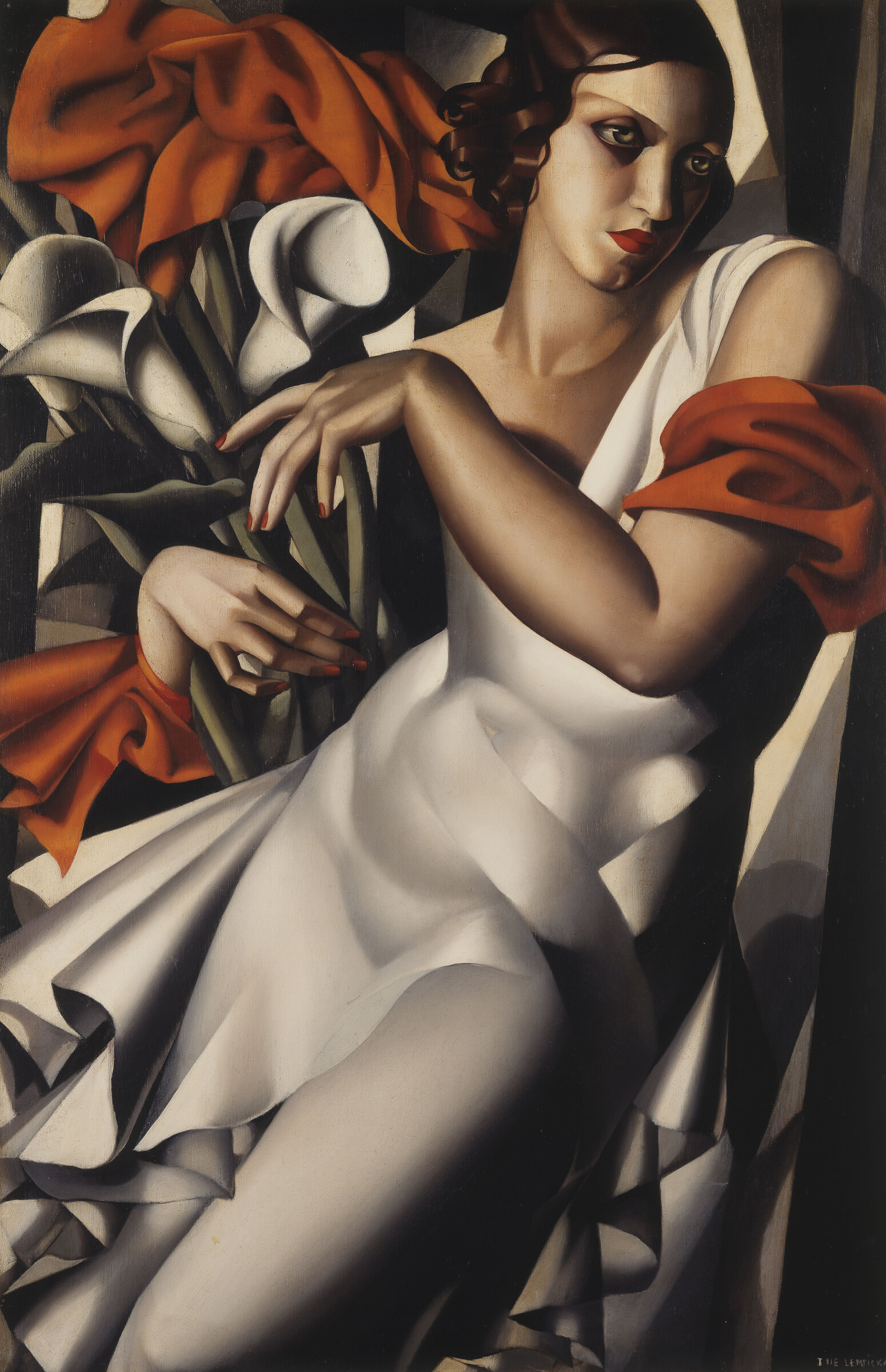
Since the artist lived here, and her granddaughter still resides here, how have you brought in de Lempicka’s hometown connections into the exhibition?
AG: While we did not add any of Lempicka’s late paintings from the years she lived in Houston, as we wanted to respect the curatorial vision that Gioia Mori and Furio Rinaldi brought to this project, we have added images and text to the exhibition didactics. Additionally, I discussed Lempicka’s Houston years in my essay for the catalogue, and both Victoria de Lempicka and her daughter Marisa joined me in a wonderful interview that we will be publishing in our membership magazine.
Is there a painting among these many iconic canvases that resonates most with you? And why?
AG: One of the discoveries for our show is an early portrait of Lempicka’s lover Ira Perrot, a poet who became Lempicka’s chief muse and companion for more than a decade. This painting wasn’t available for the San Francisco venue, so it’s a particular privilege to share it with Houston audiences. We can see in this portrait not only Perrot’s intense beauty, but also Lempicka in the process of becoming Lempicka.
She has yet to adopt her signature Art Deco style, but she already has the ability to make her subjects unforgettable.
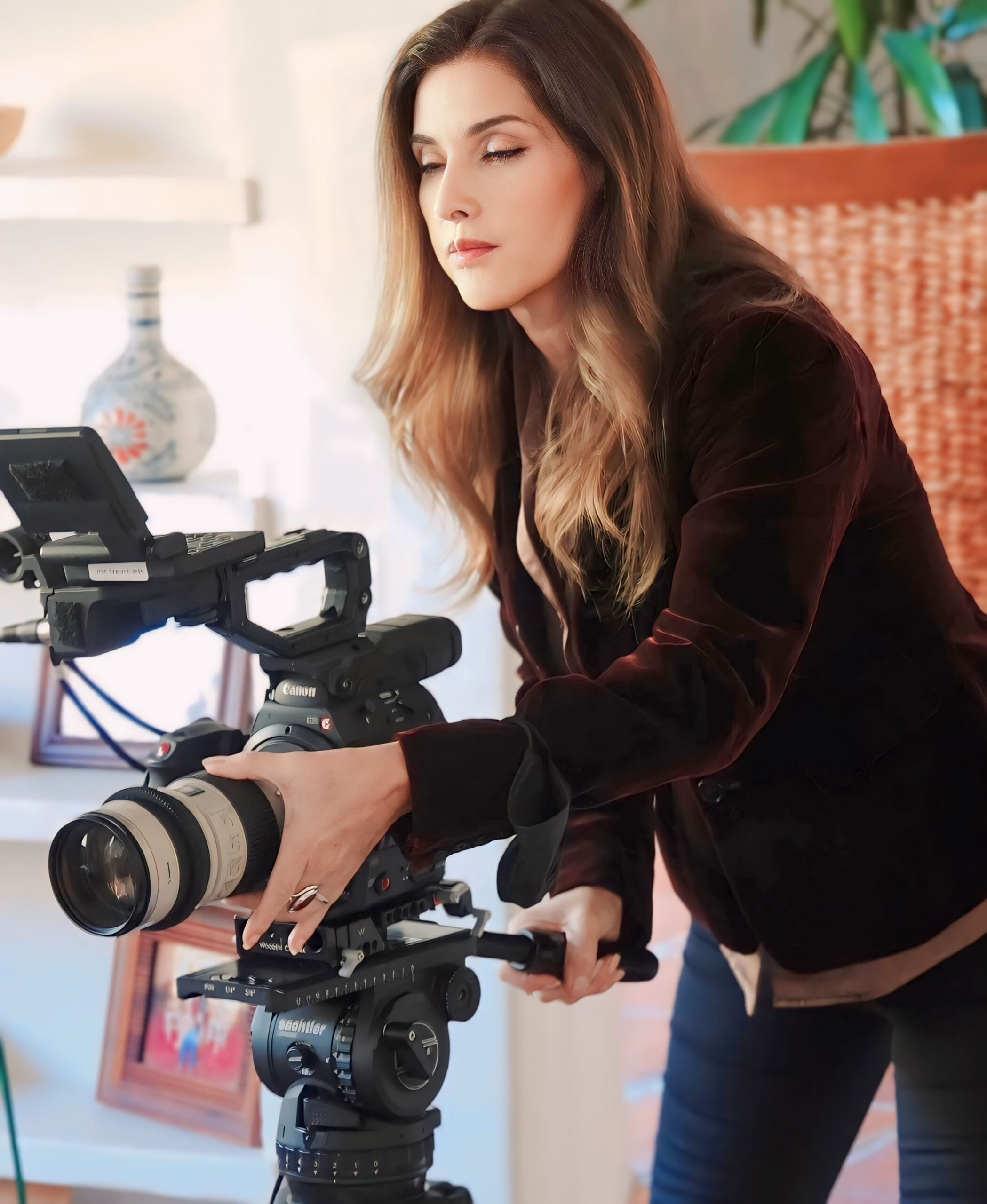
Director, Producer, Writer Julie Rubio on The True Story of Tamara de Lempicka
Aligned with the opening of “Tamara de Lempicka” at MFAH, a documentary serendipitously arrives to place the artist’s tumultuous life and artistic legacy in a broad perspective. The True Story of Tamara de Lempicka & The Art of Survival, directed by Julie Rubio, is screening at both the MFAH and the River Oaks Theatre.
PaperCity: When did the idea of making a documentary about Tamara de Lempicka’s art and life first come to you? What sparked the film concept?
Julie Rubio: When I was 21 years old, I found myself standing in a hotel in Miami, captivated by the vibrant, sensual paintings of Tamara de Lempicka. Her art, with its bold colors and striking figures, spoke to me in a way that was both really profound and deeply personal. I was told that day Tamara’s art was influenced by her relationships with both men and women. That struck a chord within me because I had girlfriends, and I didn’t think I really understood that bisexuality existed.
Growing up, I was told you were either gay or straight. As I explored Tamara’s life further, I discovered her bisexuality and, in doing so, recognized the same truth within myself. It was a moment of clarity and self-acceptance. It highlights the importance of representation. I began to understand that, for me, love is love.
Years later, a friend invited me to a small exhibition at the Weinstein Gallery in Union Square to meet Tamara de Lempicka’s family because there was a possibility of me writing a narrative screenplay and directing a movie about her life. They were looking for someone. They were looking for a woman. Once I met her family, Marisa and Victoria de Lempicka, and first heard the intimate stories of her grandmother and great-grandmother, I instantly knew I had to make this film.
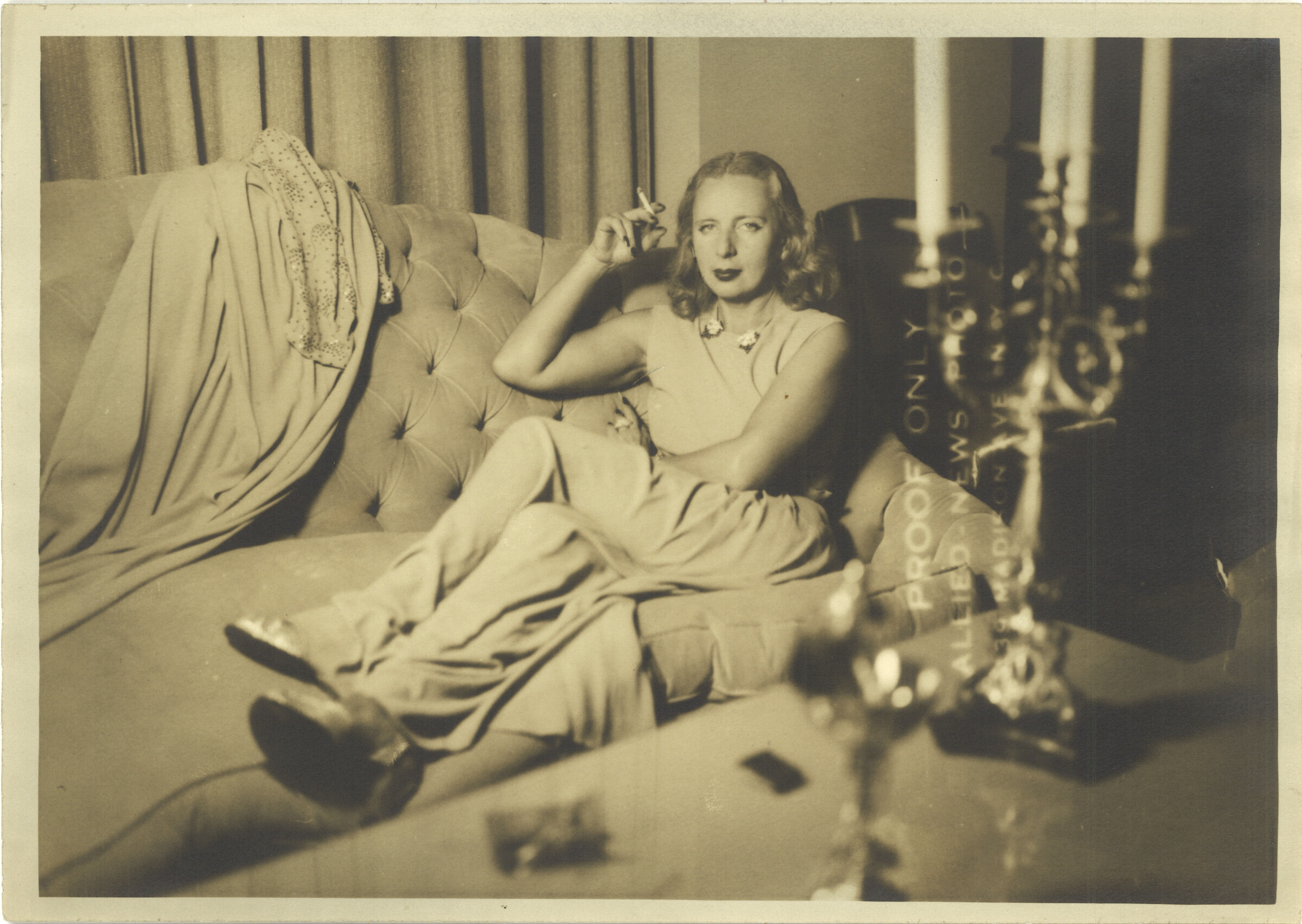
Does your film feature never before seen film clips? Did these come from the artist’s family?
JR: Yes, our documentary features unique and previously unseen film clips from Lempicka’s family archives. These clips provide an intimate look at her life beyond the public persona and are pivotal in depicting her personal and professional nuances.
Why does Lempicka deserve a documentary?
JR: Lempicka’s life as a trailblazing female artist who navigated societal challenges related to her gender, sexuality, and Jewish identity is profoundly inspiring. Her artistry and story resonate deeply with contemporary issues of identity and expression.
What makes Tamara de Lempicka’s art and life relevant for those in today’s art world and beyond?
JR: Lempicka’s art and life resonate with contemporary issues of identity, creativity and resilience in the face of societal challenges. Her pioneering role in the art world and her life as a Jewish woman, a refugee and a member of the LGBTQ+ community offer powerful lessons in overcoming adversity.
Making The True Story of Tamara de Lempicka & The Art of Survival was a journey of admiration and discovery, revealing the depths of Lempicka’s resilience and the enduring impact of her art. Her story is a compelling reminder of the power of resilience and the enduring relevance of fighting for one’s voice and vision. This film stands as a testament to the transformative power of art, illuminating how one woman’s courage can inspire generations to come, urging us to reflect on our own narratives and the legacies we choose to leave behind.
Just in: “Tamara de Lempicka” is extended through Sunday, July 6, 2025, at the Museum of Fine Arts, Houston. Get more information here.
The screening of the film The True Story of Tamara de Lempicka & The Art of Survival is set for this Saturday, March 15 at 5 pm at the MFAH. This will be followed by an Alison de Lima Greene conversation with Marisa de Lempicka and Victoria de Lempicka. A second screening will take place on Saturday, April 5 at 7 pm. Another showing is set for River Oaks Theatre on Tuesday, April 15 at 7 pm. Learn more here.
Tamara de Lempicka’s granddaughter Victoria de Lempicka and great-granddaughter Marisa de Lempicka will have a talk with MFAH exhibition curator Alison de Lima Greene on Wednesday, April 16 at 6 pm in the McClain Gallery during Texas Design Week Houston. Get more information here.









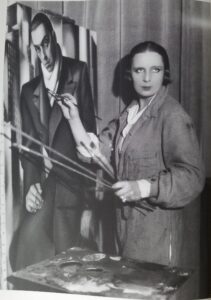









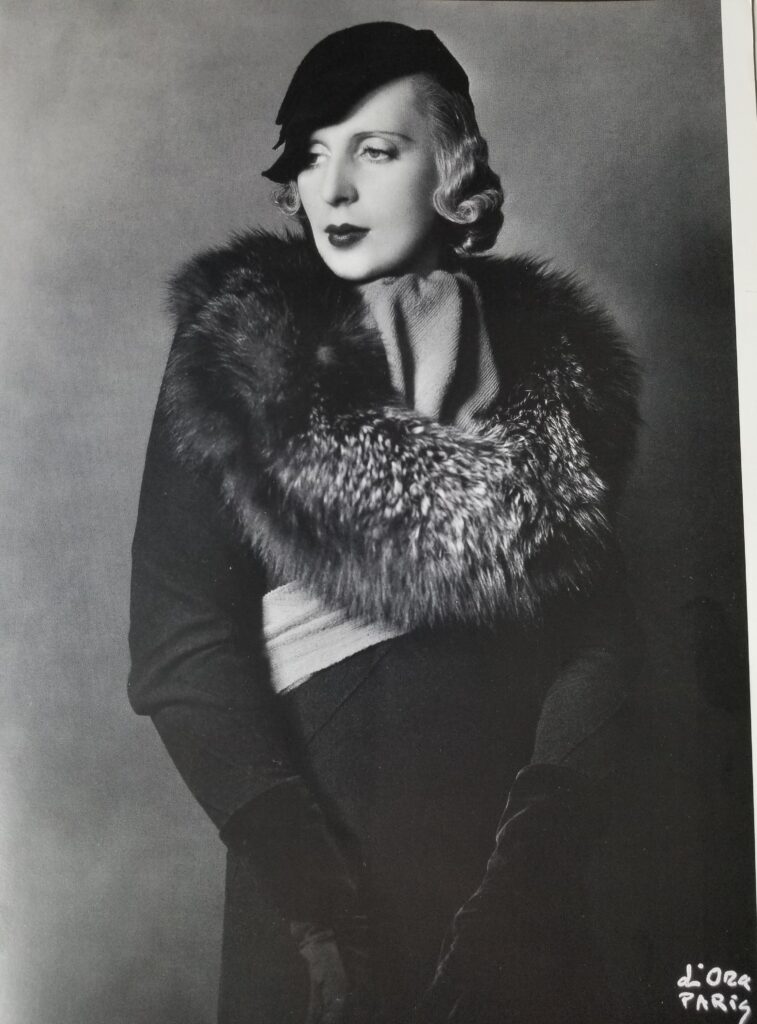


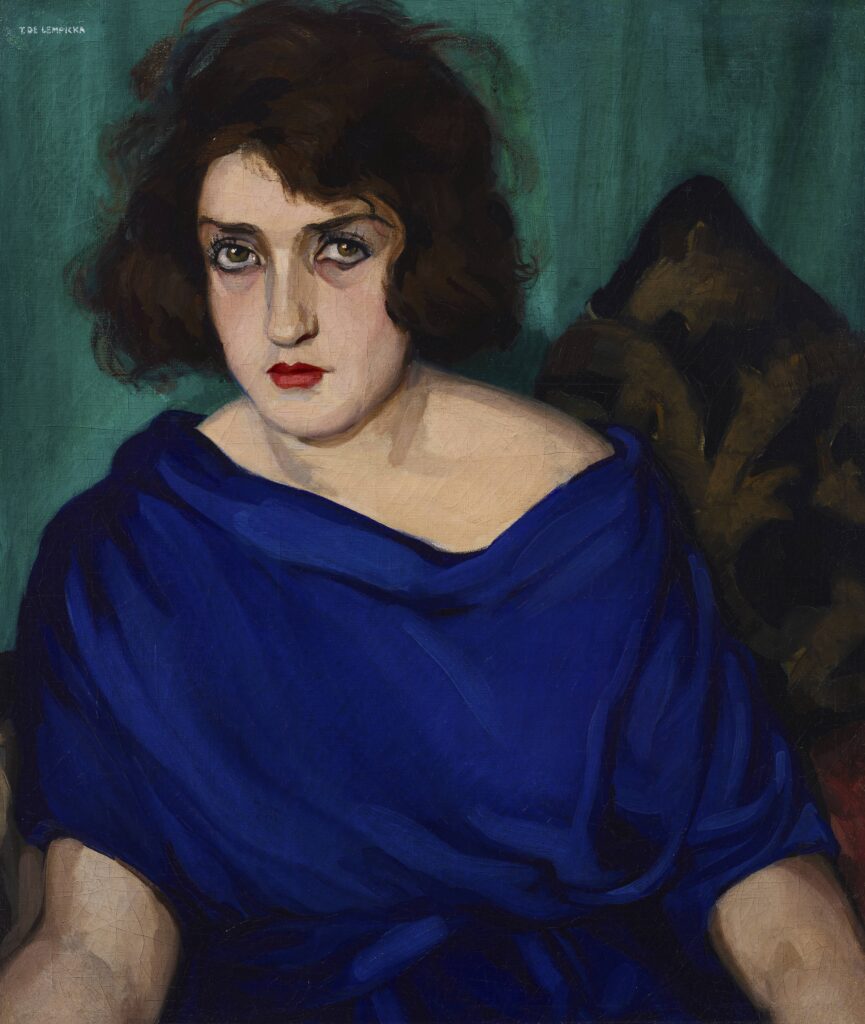





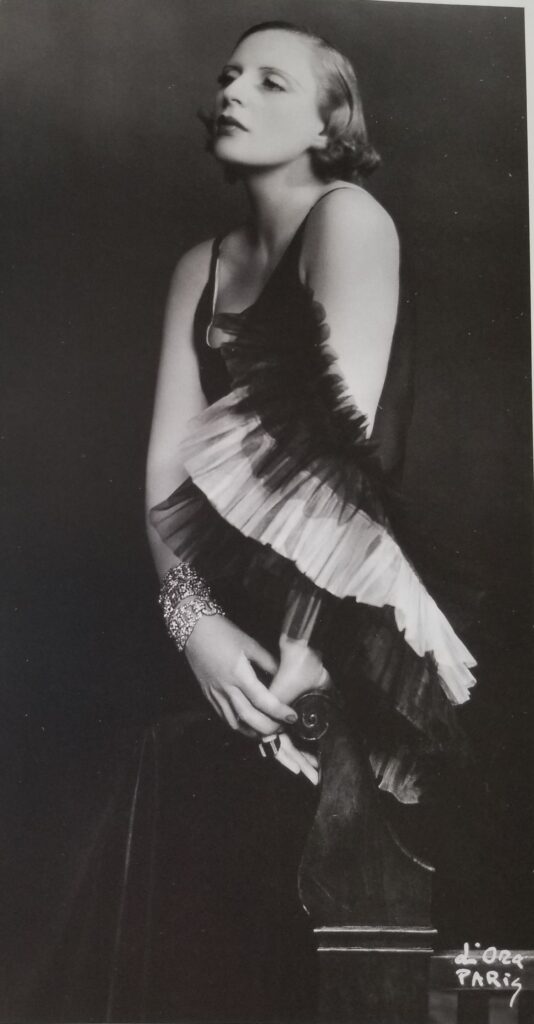
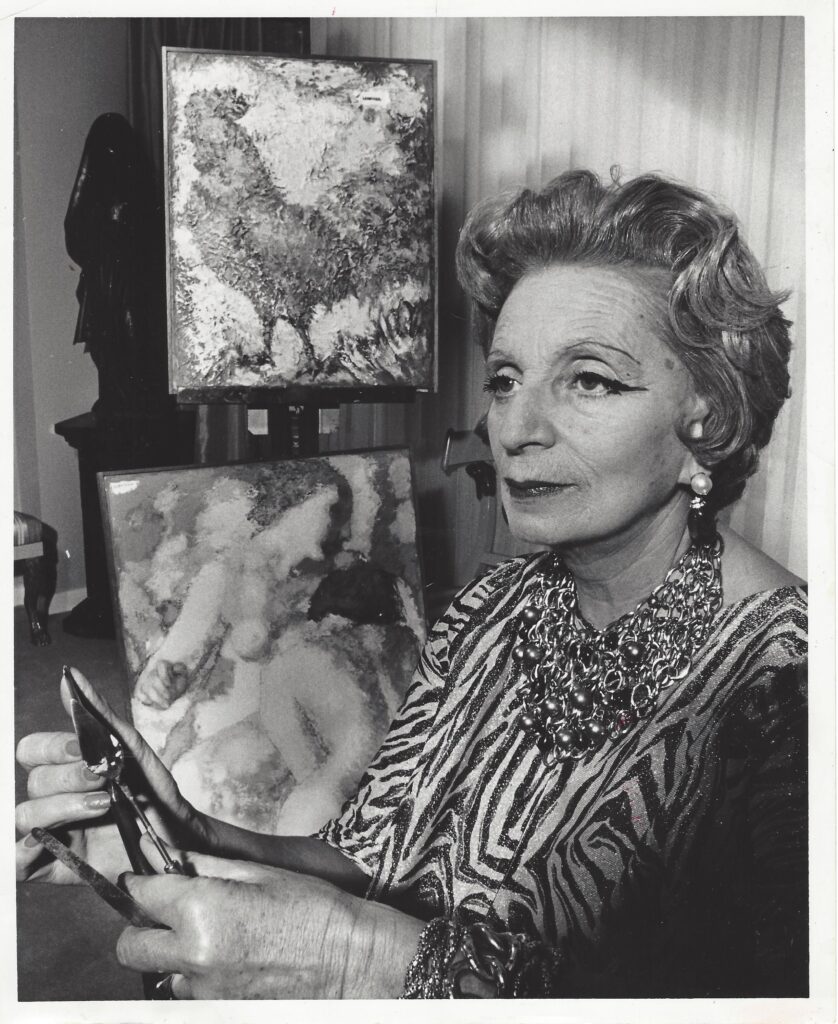







_md.jpg)












_md.jpeg)

